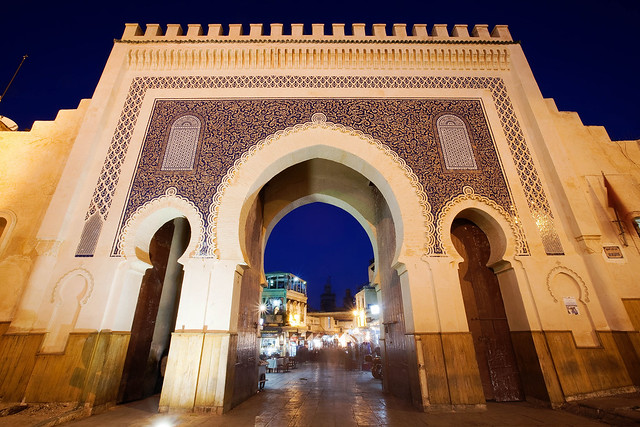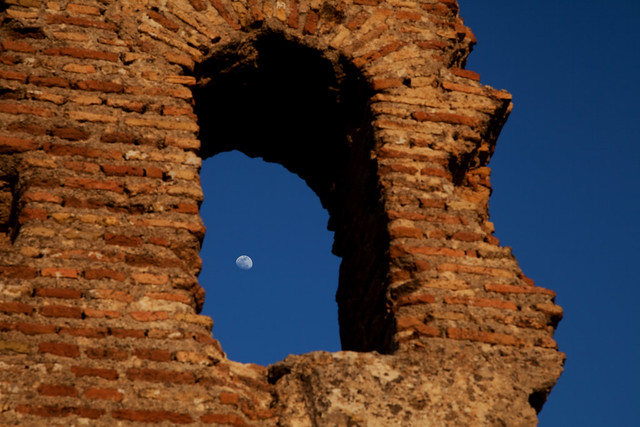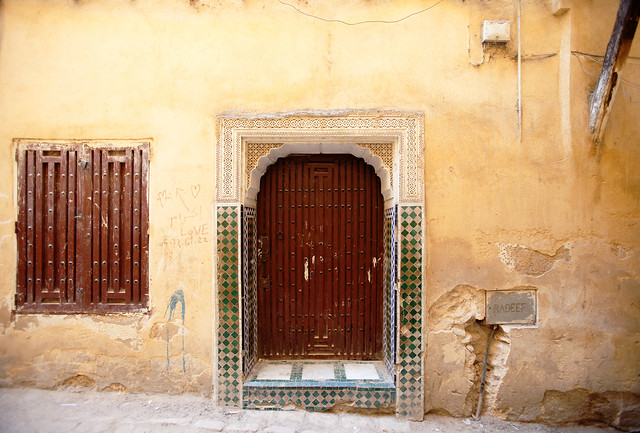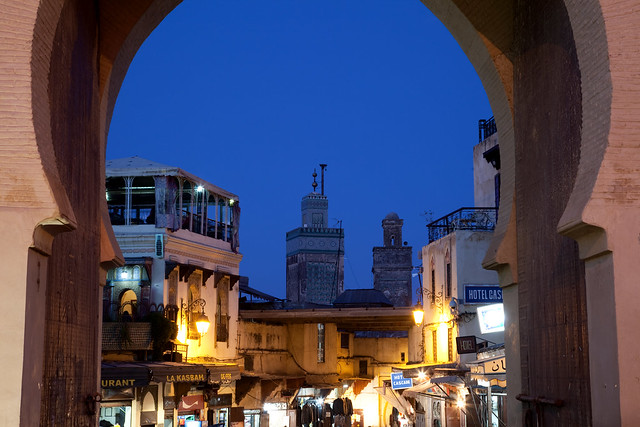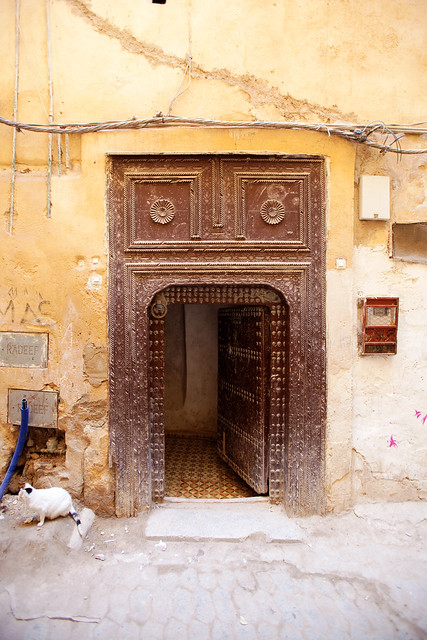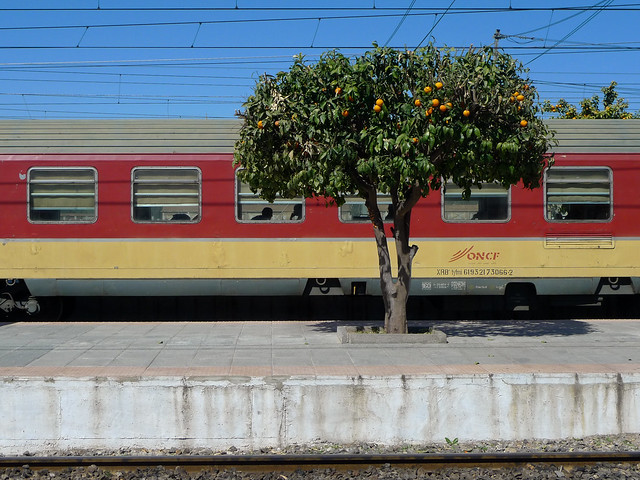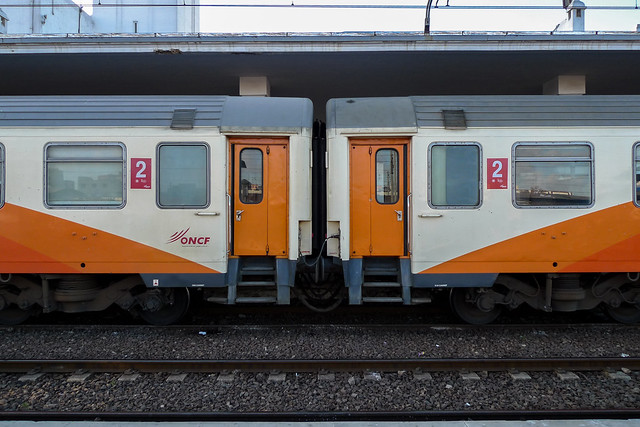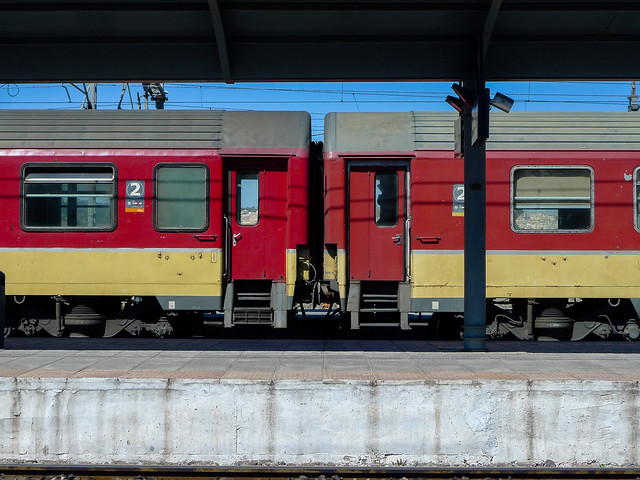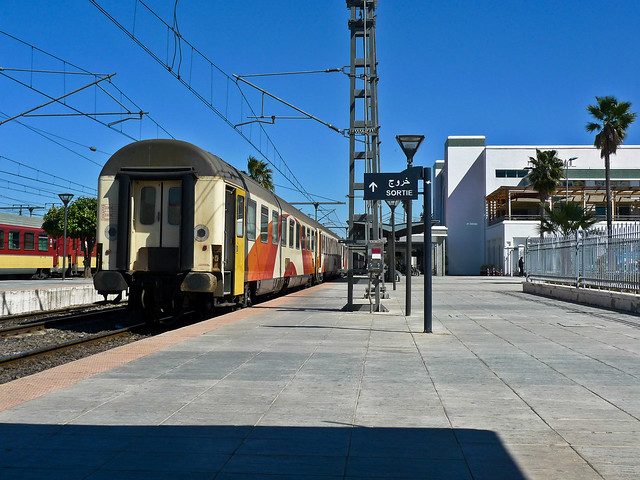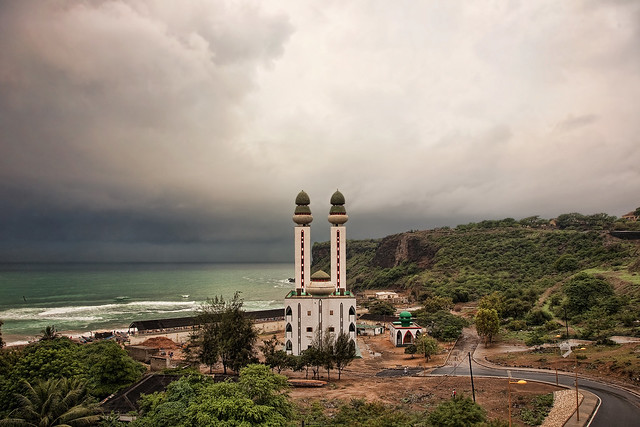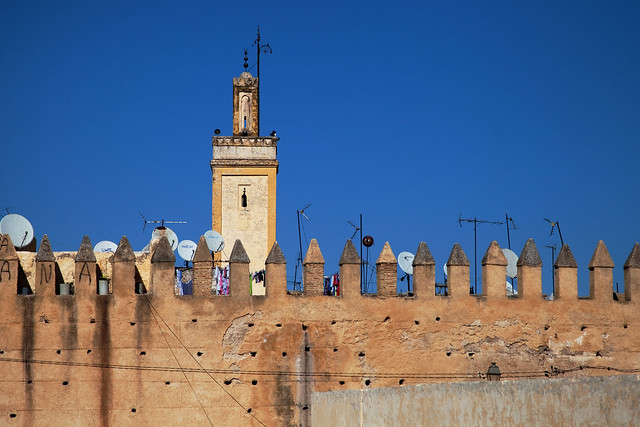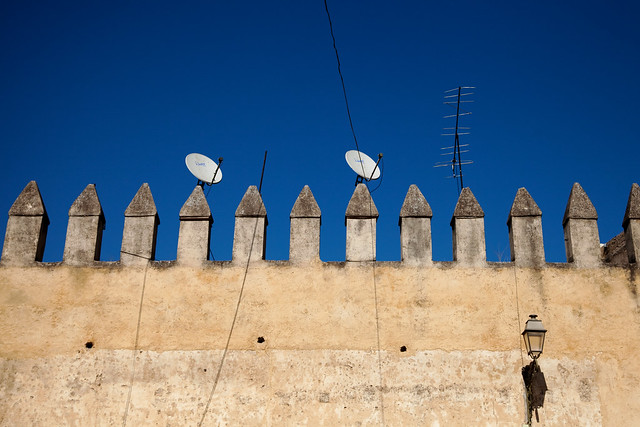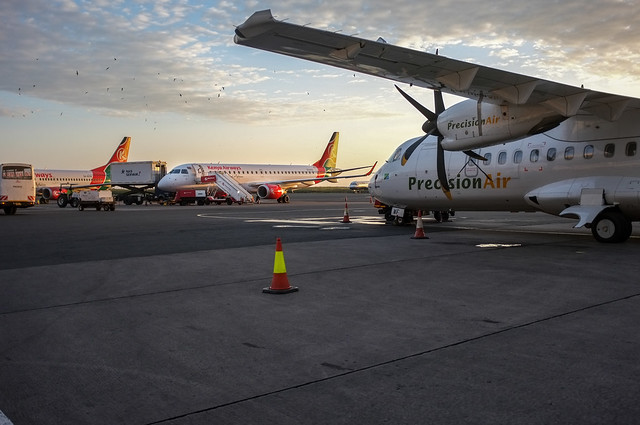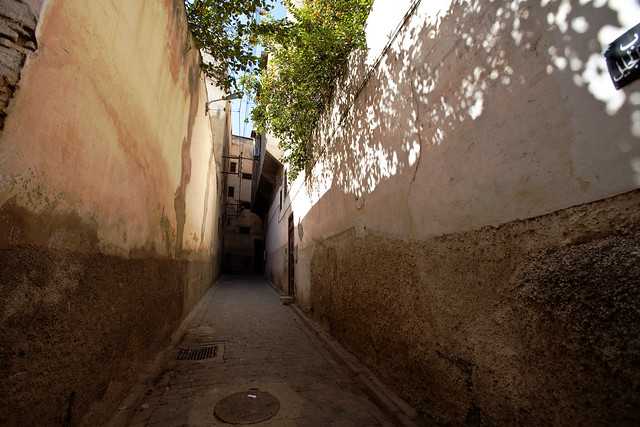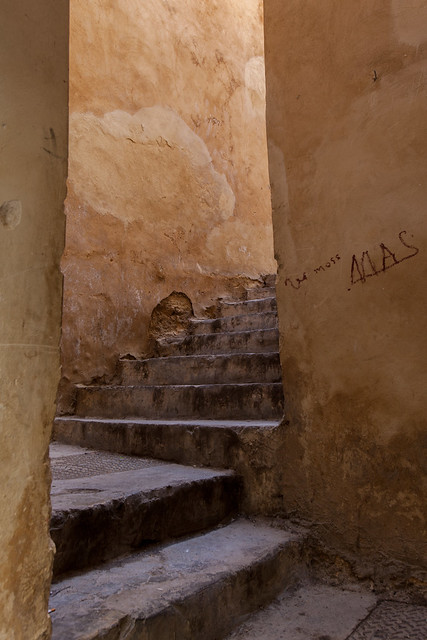Happy New Year and see you in 2013.
Saturday, December 29, 2012
Focus On: The Portals of Fes
All right Sports Fans, as we wrap up 2012, I thought I'd wrap up this series on Morocco as well. And so, I'll sign off with my take on the arches, windows, and doorways of Fes.
Tuesday, December 25, 2012
And the Glory of the Lord Shall be Revealed
I was exhausted. I had just flown into Paris on the red eye flight and just wanted to go to my hotel to catch a couple of hours of sleep before heading out into the city. I had even let the hotel - a small boutique hotel in the 5eme - know on my reservation form that I'd be checking in early. But upon my arrival to the front desk...
"Desole monsieur, but check in is at 1300."
"But I said that I'd be arriving early. See, it even says it on my confirmation."
"Mais monsieur, check in is at 1300"
There was nothing more to be done other than to head to a nearby cafe and suck down a enough cafe to try to remain conscious. That worked well for a while, but even I can only drink coffee for so long and besides, the morning rush was winding down, making the people watching less interesting by the momment. My maps indicated that there were several churches nearby and, with not much else to do, I figured I'd go exploring.
Whereupon entering one of (the?) oldest churches in Paris, I was greeted by the silence that comes from visiting at 0900 on Friday and nearly blinded by the early morning light streaming in from above the altar. I worked the scene with multiple cameras, trying to capture the majesty of the moment, but presently the light began to change, telling me it was time to move on.
The real fun came during editing time though. Getting the shot is usually half of the problem, but in this case, whatever challenges I faced at the scene, paled in comparison in trying to bring it all out through the editing process. I went through fully three versions of this photo (about six hours of work - easily a record for me) before finally managing to balance the blinding sunlight with the subdued foreground.
I'm still not sure if I fully achieved that balance but, as these classic cathedrals were deliberately made with imperfections, perhaps thats reflected in the photo as well.
Merry Christmas.
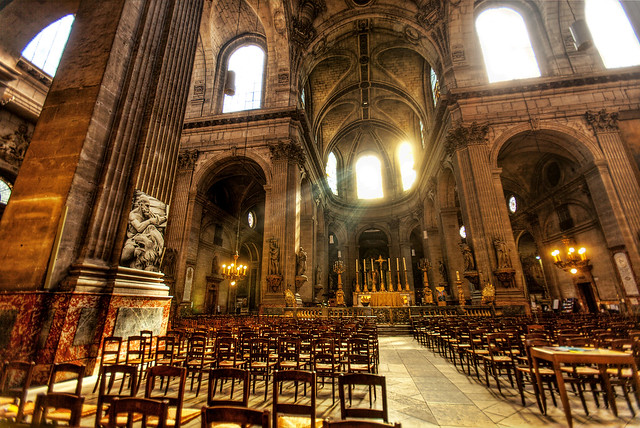
"Desole monsieur, but check in is at 1300."
"But I said that I'd be arriving early. See, it even says it on my confirmation."
"Mais monsieur, check in is at 1300"
There was nothing more to be done other than to head to a nearby cafe and suck down a enough cafe to try to remain conscious. That worked well for a while, but even I can only drink coffee for so long and besides, the morning rush was winding down, making the people watching less interesting by the momment. My maps indicated that there were several churches nearby and, with not much else to do, I figured I'd go exploring.
Whereupon entering one of (the?) oldest churches in Paris, I was greeted by the silence that comes from visiting at 0900 on Friday and nearly blinded by the early morning light streaming in from above the altar. I worked the scene with multiple cameras, trying to capture the majesty of the moment, but presently the light began to change, telling me it was time to move on.
The real fun came during editing time though. Getting the shot is usually half of the problem, but in this case, whatever challenges I faced at the scene, paled in comparison in trying to bring it all out through the editing process. I went through fully three versions of this photo (about six hours of work - easily a record for me) before finally managing to balance the blinding sunlight with the subdued foreground.
I'm still not sure if I fully achieved that balance but, as these classic cathedrals were deliberately made with imperfections, perhaps thats reflected in the photo as well.
Merry Christmas.

Tuesday, December 11, 2012
Focus On: The ONCF
One of the things I was looking forward to during my trip to Morocco was the chance of riding the Office National Chemin de Fer (ONCF) - the Moroccan State Railroad company. Being from Chicago, I have a bit of an interest in trains (no, really) and while I’ve ridden plenty of metro systems throughout the world, this would be my first chance to ride intercity heavy rail outside of the US.
To be sure, taking the ONCF was partly born of necessity - inter-Moroccan air travel was expensive and not particularly convenient and renting a car would have been problematic given the distances I wanted to cover. Talking to people who had been in Morocco before, I came away with a pretty good feeling about the ONCF, but even then I still wasn’t sure what to expect. I mean, Amtrak approaches third world levels of service on its own, and now I’d be taking the train in Africa.
Well, as I’ve mentioned before, Morocco is not Africa and is certainly not a developing country. And the ONCF was - quite simply - the only way I could imagine traveling in the country. Yeah, trains were a little late once or twice, but certainly no worse than the US. And while they were perhaps a little dated (I’d guess they were comparable in levels of comfort to US trains in, say the fifties to the seventies) they were more than serviceable.
One quirk of the ONCF which I feel compelled to share with you however, should you ever find yourself in Morocco, is that First Class is a rip-off. In first class, you have assigned seating in a six person compartment (3x3 facing each other). Whereas in Second Class, it’s 2x2 open seating. Basically my First Class ticket entitled me to sit by the door of the compartment, two seats away from the window, staring at someone for four hours. In Second Class, I could pick my own (window) seat. The comfort level was the same (maybe in the summer an air conditioned compartment is worth it. In February? Climate control wasn’t an issue.). Needless to say, I rode Second Class with my First Class ticket (thoroughly confusing the conductor in the process).
Finally, any railroad that has orange trees growing in its stations has to be doing something right.
To be sure, taking the ONCF was partly born of necessity - inter-Moroccan air travel was expensive and not particularly convenient and renting a car would have been problematic given the distances I wanted to cover. Talking to people who had been in Morocco before, I came away with a pretty good feeling about the ONCF, but even then I still wasn’t sure what to expect. I mean, Amtrak approaches third world levels of service on its own, and now I’d be taking the train in Africa.
Well, as I’ve mentioned before, Morocco is not Africa and is certainly not a developing country. And the ONCF was - quite simply - the only way I could imagine traveling in the country. Yeah, trains were a little late once or twice, but certainly no worse than the US. And while they were perhaps a little dated (I’d guess they were comparable in levels of comfort to US trains in, say the fifties to the seventies) they were more than serviceable.
One quirk of the ONCF which I feel compelled to share with you however, should you ever find yourself in Morocco, is that First Class is a rip-off. In first class, you have assigned seating in a six person compartment (3x3 facing each other). Whereas in Second Class, it’s 2x2 open seating. Basically my First Class ticket entitled me to sit by the door of the compartment, two seats away from the window, staring at someone for four hours. In Second Class, I could pick my own (window) seat. The comfort level was the same (maybe in the summer an air conditioned compartment is worth it. In February? Climate control wasn’t an issue.). Needless to say, I rode Second Class with my First Class ticket (thoroughly confusing the conductor in the process).
Finally, any railroad that has orange trees growing in its stations has to be doing something right.
Saturday, December 8, 2012
Like a Mosque in the Rain
I believe the official name of this mosque is “The Mosque of the Divinity” but all of the toubabs in Dakar just called it the Seaside Mosque. It was also probably one of the more popular photographic subjects in Dakar, since it was a pretty dramatic building and one that you could shoot from multiple angles. Since I had to drive by it every weekend to get to my prefered French chain grocery store, I got in the habit of throwing my camera bag in the car, just on the off chance that I’d catch some good light.
Which I did. Many times in fact. Here’s the best one:
Which I did. Many times in fact. Here’s the best one:
Tuesday, December 4, 2012
Focus On: The Satellite Dishes of the Old Medina
As I mentioned in my previous entry on Fes, I went in with few preconceptions about how to shoot the place. To be honest, this hasn’t worked out for me well before or since, but for whatever reason, I was able to arrive in Fes, walk around for a day or so, and figure out some photographic themes I wanted to explore. One of them was the omnipresence of satellite dishes.
Now, I’ve traveled fairly extensively in the developing world and the Middle East (though it's worth noting that Morocco is not the first and is arguably not the second), so I’m no stranger to seeing a forest of satellite dishes bolted onto here and there and spread across the landscape as some sort of fiberglass kudzu. But for some reason it just struck me more in Morocco. Maybe it’s because Morocco is not a developing country, and yet it still is infested with these ubiquitous devices. Maybe it was just the juxtaposition with the classic architecture of the old medina. Whatever it was, they were everywhere.
Now, I’ve traveled fairly extensively in the developing world and the Middle East (though it's worth noting that Morocco is not the first and is arguably not the second), so I’m no stranger to seeing a forest of satellite dishes bolted onto here and there and spread across the landscape as some sort of fiberglass kudzu. But for some reason it just struck me more in Morocco. Maybe it’s because Morocco is not a developing country, and yet it still is infested with these ubiquitous devices. Maybe it was just the juxtaposition with the classic architecture of the old medina. Whatever it was, they were everywhere.
Friday, November 30, 2012
Focus On: Jomo Kenyata International Airport
Jomo Kenyata Airport in Nairobi, Kenya is the bane of my photographic existence. Okay, maybe not THE bane, maybe more like A bane. Or perhaps an annoyance. A minor one even. And I guess it is a relatively infrequent annoyance at that. But “Jomo Kenyata Airport is a minor, infrequent annoyance of my photographic existence" just doesn’t have same ring to it.
So, why is NBO a minor, infrequent annoyance of my photographic existence? Is it because the terminal is a hulking, seventies, brutalist monstrosity?
No. But it is that.
Is it because the ratio of duty free stores to restaurants is ‘the entire airport to one’?
No. But that is definitely the case.
It’s because the light and air quality at NBO - at least every time I’ve been there - are amazing.
But also because it’s a brutalist monstrosity.
Let me explain.
There aren’t any jetways when you deplane at NBO but - and this is unusual for an African airport - they don’t make you take a bus to get to the terminal. You simply walk along marked paths and then up and onto one of several pedestrian bridges and into the terminal. What this means is that you get to walk in the ramp area of a decently sized airport, which would be a pretty big photographic draw to me anyway. But - for some reason - it seems like every time I fly through NBO, I’m there either early morning or late afternoon - when the light is at its best. However...while I almost always have an SLR in my carry on bag, it’s always broken down. Furthermore, taking photos in airports (or any government facility; real, imagined, or otherwise) in Africa can be a pretty adventuresome experience. Maybe NBO is cool with you breaking out the SLR and shooting away, but I've had enough experiences in Africa that I wasn't quite prepared to find out.
No problem you think, just shoot from inside terminal while waiting for your next flight. One issue with that. Remember how I said that NBO is a brutalist monstrosity? Well, if you try shooting from inside, this is the view you get:
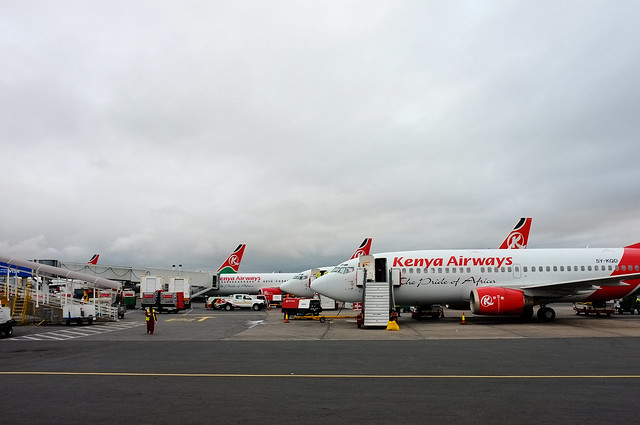
So, why is NBO a minor, infrequent annoyance of my photographic existence? Is it because the terminal is a hulking, seventies, brutalist monstrosity?
No. But it is that.
Is it because the ratio of duty free stores to restaurants is ‘the entire airport to one’?
No. But that is definitely the case.
It’s because the light and air quality at NBO - at least every time I’ve been there - are amazing.
But also because it’s a brutalist monstrosity.
Let me explain.
There aren’t any jetways when you deplane at NBO but - and this is unusual for an African airport - they don’t make you take a bus to get to the terminal. You simply walk along marked paths and then up and onto one of several pedestrian bridges and into the terminal. What this means is that you get to walk in the ramp area of a decently sized airport, which would be a pretty big photographic draw to me anyway. But - for some reason - it seems like every time I fly through NBO, I’m there either early morning or late afternoon - when the light is at its best. However...while I almost always have an SLR in my carry on bag, it’s always broken down. Furthermore, taking photos in airports (or any government facility; real, imagined, or otherwise) in Africa can be a pretty adventuresome experience. Maybe NBO is cool with you breaking out the SLR and shooting away, but I've had enough experiences in Africa that I wasn't quite prepared to find out.
No problem you think, just shoot from inside terminal while waiting for your next flight. One issue with that. Remember how I said that NBO is a brutalist monstrosity? Well, if you try shooting from inside, this is the view you get:
Yeah. Concrete pillars are just great.
So, this was the view I was confronted with for years. Great light, interesting and colorful subjects, and no good way to shoot them.
Unless maybe my equipment was the problem? DSLRs are great, but they do tend to draw attention to themselves. On the other hand, Point and Shoots don’t usually offer the image quality I want.
Enter my new Fuji x100. Great camera all around, but my favorite feature is that looks about sixty years old. Whip that thing out on the tarmac and not only do you not get hassled, you get shots.

My travels don’t seem to take me out to East Africa very much anymore, so I’m not sure when I’ll be getting back to NBO. But at least I was finally able to capture what I saw out there.
But don’t get me wrong - it’s not like I’m saying I can die happy now or something.
I mean, at most, it was a minor infrequent annoyance.
Monday, November 26, 2012
Focus On: The Passages of the Old Medina (Updated and Bumped)
(26 Nov 12) - All right Sports Fans, in lieu of me continuing to drag on publishing the remainders of the SecState visit, I thought it best to plow ahead with some other content while I wait for my muse to catch up to me. I published the below some time ago with the expectation that I'd have enough photos for a second post on the passages. Turns out, not so much. So, in a bold and decisive decision, I've just updated and reposed this post. Enjoy.
I can't say that it was a conscious decision - going in at least - to focus on the passageways in the old Medina of Fes, but it was obvious to me soon after my arrival that I was drawn to them. After a day or so, I began to seek them out - the more mysterious, the better. I like the feeling of claustrophobia I get while looking at these, although I should say that I never really felt it while wandering the Medina. I never thought that it was THAT hard to navigate (although I did get turned around a few times) but your mileage might vary.

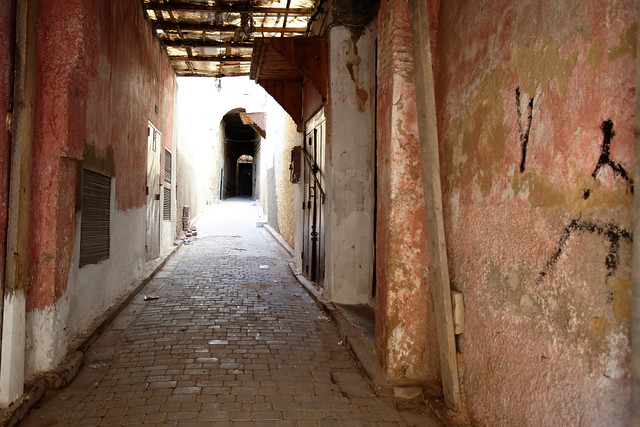
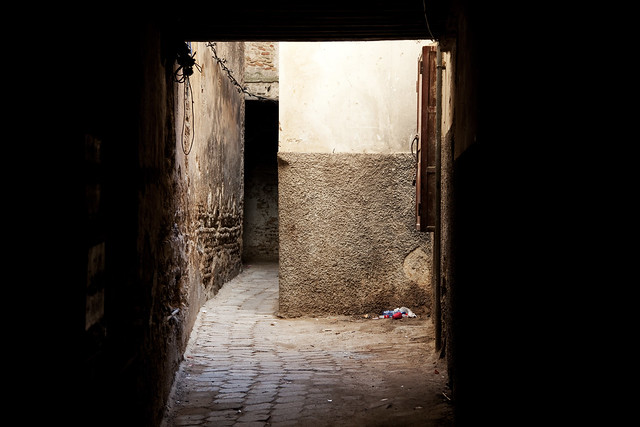
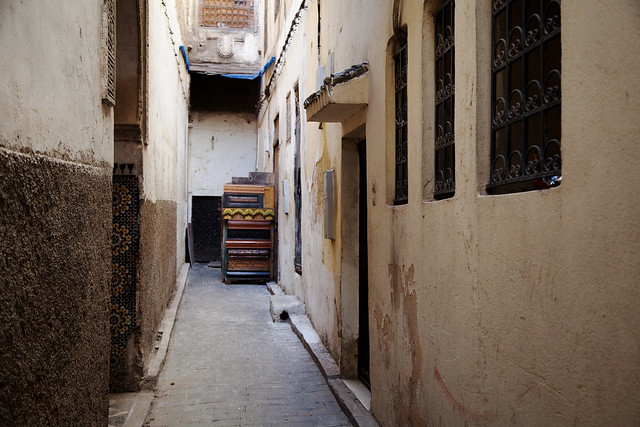

I can't say that it was a conscious decision - going in at least - to focus on the passageways in the old Medina of Fes, but it was obvious to me soon after my arrival that I was drawn to them. After a day or so, I began to seek them out - the more mysterious, the better. I like the feeling of claustrophobia I get while looking at these, although I should say that I never really felt it while wandering the Medina. I never thought that it was THAT hard to navigate (although I did get turned around a few times) but your mileage might vary.





Saturday, November 3, 2012
Shooting the Secretary: The Hotel
And here’s where it all came apart.
Up until the Secretary’s last stop, things had been going generally well, photographically speaking. As I’ve detailed in the previous posts, while a lack of photojournalism experience and prior planning stopped me from maximizing my opportunities, I had generally made decent enough shots. But here, when the Secretary came back to her hotel to meet members of the embassy community, my lack of PJ experience, combined with the ever fluid nature of a VIP visit of this stature, combined to almost undermine the entire day.
There was a reason.
With regards to this assignment as the Embassy’s photographer, my job had always been twofold. Yes, I was to capture the events of the day - photos of the Secretary performing diplomacy as it were. And yes, the folks in the Embassy did care about these photos to some extent...but...there was one photo which was clearly more important than the others, one which - quite frankly - was the only one pretty much anyone in the building really cared about:
Secretary Clinton was going to take a photo with the children of the Embassy’s staff.
Now, if you’ve seen the kind of stuff I normally shoot (if you haven’t, go look. I’ll wait), you know that shooting a group photo of a bunch of crumb snatchers is about as far from what I normally shoot as possible. But this photo was the price to pay for a day of playing photojournalist, so it had to be done.
This created several problems which permeated this last event. First, I’m not used to having to produce a shot on demand. If I screw up one of my shots, well who cares? This certainly created some self-inflicted pressure, but also externally inflicted. As in, I was reminded repeatedly: “don’t screw this shot up”. The second problem, and somewhat related to the first, was that this is where my relative lack of experience with artificial lighting came to the fore. I mean, I had been starting to go through my strobist drills, but this was all relatively recent, and I had nothing resembling either experience or confidence when it came to artificial lighting. I had been taking my camera and a flash to every Embassy event I could in the weeks leading up to the visit, but I still wasn’t fully comfortable with the strobes. Hopefully, I’d be able to get through this part of the trip with minimal issues though.
Her Plan. Well, there we were in sort of a grey area. It was never definitely established what her exact schedule would be. Initially it was that she would return her room at the hotel, rest/work/whatever for a few hours and then meet the Embassy folks. Then, it changed to: head directly to the embassy meeting. Along the way, all sorts of detours were added on: swear in Peace Corps Volunteers, photos with the Marine Security Guards; photos with this person, photos with that person - you get the idea.
My Plan. Very quickly I got the idea that any serious pre-planning on my part was useless and that I’d be lucky to keep up with the Secretary let alone get a step or two ahead of her. Still, I had a few ideas in mind - most of which had to be abandoned. I was particularly concerned with lighting the group photo of the Embassy kids so my initial thought (when it looked like there would be a pause between the secretary’s arrival and her speech/meeting) was to set up lights and umbrellas in true Strobist fashion. Based on her rapidly changing schedule, that plan quickly fell apart. My next thought was to pack my pocket wizards and have a couple of people hold the flashes as voice activated light stands, but as the plan continued to evolve, I realized that I’d just have to go with the flashes on camera and hope for the best.
Despite having to dedicate a disproportionate number of brain cells to dealing with that issue, I was still thinking about trying to make an interesting photo or two as well. The big shot that I wanted to get was something capturing the energy of the crowd and their excitement about hearing Hillary speak. The setup I had in mind was to work the back of the crowd and either capture silhouettes of the backs of peoples heads with the Secretary in focus, or get photos of people holding up their cameras taking their own photos. Perhaps a bit cliched, but one that I felt would illustrate how the crowd felt about the guest. Equally important, they would be relatively safe shots of the sort that I felt I could get.
What actually happened. Well, like I said starting out, this is where it almost fell apart. It didn’t of course, and while I came out of this event extremely frustrated with what I produced, it was still minimally successful.
Overall, it’s hard to really describe a narrative for the event. By the time we arrived back at the hotel, the skies had begun to open up with the first rains of the season, so in addition to trying to stay a step ahead of the Secretary - despite having no idea where she was going - I was constantly flipping my cameras down to keep water off the lens. The first stop was to visit the new group of Peace Corps Volunteers for the swearing in, and it was here that my problems started - flashes wouldn’t cycle fast enough or (despite being set in TTL) wouldn’t sync properly. In desperation, I tried opening up my lenses and shooting available light, but that just led to blurry photos. And every time I tried to take a moment to troubleshoot, the call went out again to get another photo of Secretary with this or that person. I had a already fallen into ‘react’ mode and I wasn’t making anything original or even really interesting.
Within seconds of finishing with the Peace Corps we were on our way to the ballroom for the Secretary’s address to the Embassy staff. Organization of the media had seemed to come apart and i found myself entering from the rear of the room. I grounded my bag in what seemed like a safe spot along one wall and pushed myself to the front of crowd. Upon making it to the front, I noticed that the kids were already assembled for the photo. I had intended to work the front of the crowd for a while, then go to the back to get my aforementioned reaction shots. However the crowd was bigger than I had thought, calling into question how easy it would be for me to push through a couple more times. Moreover, with the subjects for the main event photo already assembled, it seemed more prudent to stay close. I shot several photos of the Secretary speaking, but even as I was doing so, I felt like they were bland (they weren’t just bland as it turned out - they were also unusable). I was feeling the perfect storm of photographic suck: my equipment wasn’t working the way I wanted, I felt like I was out of position, and most importantly, I felt completely uncreative at the decisive moment.
But you don’t get long to dwell on that and after some very short remarks, it was gametime. But the unorganized nature of the day continued to plague me – the Secretary didn’t move directly to the kids, instead talking with some people first and working part of the crowd. At this point, my mind was racing: “should I move to get a shot of her where she is now? Should I stay where I am and be ready for the kid shot?” “are my flashes going to work?” “everything set up?” “f/stop, sync, white balance?” When she finally did move into position behind the kids, it didn’t help matters much: “is that the position she’s going to hold?” “is she going to move around the crowd of them” “should I take the picture now?” “now?” “how do I get all these kids all looking at the camera at the same time” “wait, why is there one kid rolling around on the ground in front of the rest of them” (and there really, really was) “should that kid get corralled up?” “who’s going to do that?” “do I crop that kid out of the photo?” “leaver her in?” and on, and on, and on…
You get the idea. I won’t lie though, on top of all of the other technical issues I’d been dealing with, the unsupervised kid really threw off what was left of my inner zen. Still, I did a short count, and blasted off about five or six shots. The flash didn’t really sync, certainly didn’t refresh fast enough for the rest of the sequence, and was completely unbalanced with a nice, harsh, on-camera effect that I had hoped so much to avoid. I don’t think there’s a single frame that has all of the kids looking the same way.
Naturally, the parents loved it.*
From there, the Secretary proceeded work the front of the crowd, shaking hands and the like. Here I was finally able to regain some creativity and get some crowd reaction shots which, if not exactly what I had hoped or planned for before the event, at least captured the emotion of the moment.
The embassy crowd was compelled to remain within the ballroom but the Secretary’s business was not done and neither was mine. Back out into the hallway it was a flurry of photos with this group or that person. Every time I thought I was done and could take 30 seconds to figure out these stupid flashes and get them working like I wanted them to, I was called up yet again to make an image. Most of these photos were terrible.
Finally, she broke off with the Ambassador for a moment to tour a small art store within the hotel (my photos of that were bad too). They came back out, said their goodbyes, and she went back to her room to start prepping for the next stop on her journey.
I went back to the ballroom, retrieved my camera bag, and went up to the lobby to wait for a bus ride back to the embassy like the rest of the staff.
Photo Critique.
Um, Yeah.
Well, first of all, despite me talking about it so much, no group kid/Secretary of State photo for you. I don’t know how comfortable parents would be me with me plastering their little darlings up on this blog and did I mention those photos were terrible? Let’s move on.

So here we have basically the opposite of the crowd shot that I was going for, both in the relationship of the crowd and of it being, you know, good. My first ever photo editor used to preach "hands and eyes!" "hands and eyes!" "I want to see hands and eyes" and while that's a great rule that I've followed ever since, I hope he would still find this one acceptable as the subject here really is the crowd and thier reaction.

Well, this is better. Really like the reaction on the girl's face, but I like less the fact that her face is partially obscured. The lesson learned here was to continue to work the scene, but since I had to keep up with the Secretary, that wasn't an option. Once again however, while there is some emotion captured here (and I think done fairly well), this suffers from the same problem that my Health Clinic photos suffered from - absent a caption, this doesn't tell enough of a story. Far better if I had zoomed out and had the Secretary exiting frame left.
All right Sports Fans, that's all for this one. One more of these to go where I'll write about the Secretary's departure and then sum up lessons learned about the whole experience. Till then.
*the parents might have loved it, but the other professional photographer in the embassy called me out on it. She specializes in family (and children’s(!)) photos and would have been perfect on the day, but she was out of town. She hilariously ripped that photo apart and a good laugh (with me) at my expense. I was glad to hear it.
Up until the Secretary’s last stop, things had been going generally well, photographically speaking. As I’ve detailed in the previous posts, while a lack of photojournalism experience and prior planning stopped me from maximizing my opportunities, I had generally made decent enough shots. But here, when the Secretary came back to her hotel to meet members of the embassy community, my lack of PJ experience, combined with the ever fluid nature of a VIP visit of this stature, combined to almost undermine the entire day.
There was a reason.
With regards to this assignment as the Embassy’s photographer, my job had always been twofold. Yes, I was to capture the events of the day - photos of the Secretary performing diplomacy as it were. And yes, the folks in the Embassy did care about these photos to some extent...but...there was one photo which was clearly more important than the others, one which - quite frankly - was the only one pretty much anyone in the building really cared about:
Secretary Clinton was going to take a photo with the children of the Embassy’s staff.
Now, if you’ve seen the kind of stuff I normally shoot (if you haven’t, go look. I’ll wait), you know that shooting a group photo of a bunch of crumb snatchers is about as far from what I normally shoot as possible. But this photo was the price to pay for a day of playing photojournalist, so it had to be done.
This created several problems which permeated this last event. First, I’m not used to having to produce a shot on demand. If I screw up one of my shots, well who cares? This certainly created some self-inflicted pressure, but also externally inflicted. As in, I was reminded repeatedly: “don’t screw this shot up”. The second problem, and somewhat related to the first, was that this is where my relative lack of experience with artificial lighting came to the fore. I mean, I had been starting to go through my strobist drills, but this was all relatively recent, and I had nothing resembling either experience or confidence when it came to artificial lighting. I had been taking my camera and a flash to every Embassy event I could in the weeks leading up to the visit, but I still wasn’t fully comfortable with the strobes. Hopefully, I’d be able to get through this part of the trip with minimal issues though.
Her Plan. Well, there we were in sort of a grey area. It was never definitely established what her exact schedule would be. Initially it was that she would return her room at the hotel, rest/work/whatever for a few hours and then meet the Embassy folks. Then, it changed to: head directly to the embassy meeting. Along the way, all sorts of detours were added on: swear in Peace Corps Volunteers, photos with the Marine Security Guards; photos with this person, photos with that person - you get the idea.
My Plan. Very quickly I got the idea that any serious pre-planning on my part was useless and that I’d be lucky to keep up with the Secretary let alone get a step or two ahead of her. Still, I had a few ideas in mind - most of which had to be abandoned. I was particularly concerned with lighting the group photo of the Embassy kids so my initial thought (when it looked like there would be a pause between the secretary’s arrival and her speech/meeting) was to set up lights and umbrellas in true Strobist fashion. Based on her rapidly changing schedule, that plan quickly fell apart. My next thought was to pack my pocket wizards and have a couple of people hold the flashes as voice activated light stands, but as the plan continued to evolve, I realized that I’d just have to go with the flashes on camera and hope for the best.
Despite having to dedicate a disproportionate number of brain cells to dealing with that issue, I was still thinking about trying to make an interesting photo or two as well. The big shot that I wanted to get was something capturing the energy of the crowd and their excitement about hearing Hillary speak. The setup I had in mind was to work the back of the crowd and either capture silhouettes of the backs of peoples heads with the Secretary in focus, or get photos of people holding up their cameras taking their own photos. Perhaps a bit cliched, but one that I felt would illustrate how the crowd felt about the guest. Equally important, they would be relatively safe shots of the sort that I felt I could get.
What actually happened. Well, like I said starting out, this is where it almost fell apart. It didn’t of course, and while I came out of this event extremely frustrated with what I produced, it was still minimally successful.
Overall, it’s hard to really describe a narrative for the event. By the time we arrived back at the hotel, the skies had begun to open up with the first rains of the season, so in addition to trying to stay a step ahead of the Secretary - despite having no idea where she was going - I was constantly flipping my cameras down to keep water off the lens. The first stop was to visit the new group of Peace Corps Volunteers for the swearing in, and it was here that my problems started - flashes wouldn’t cycle fast enough or (despite being set in TTL) wouldn’t sync properly. In desperation, I tried opening up my lenses and shooting available light, but that just led to blurry photos. And every time I tried to take a moment to troubleshoot, the call went out again to get another photo of Secretary with this or that person. I had a already fallen into ‘react’ mode and I wasn’t making anything original or even really interesting.
Within seconds of finishing with the Peace Corps we were on our way to the ballroom for the Secretary’s address to the Embassy staff. Organization of the media had seemed to come apart and i found myself entering from the rear of the room. I grounded my bag in what seemed like a safe spot along one wall and pushed myself to the front of crowd. Upon making it to the front, I noticed that the kids were already assembled for the photo. I had intended to work the front of the crowd for a while, then go to the back to get my aforementioned reaction shots. However the crowd was bigger than I had thought, calling into question how easy it would be for me to push through a couple more times. Moreover, with the subjects for the main event photo already assembled, it seemed more prudent to stay close. I shot several photos of the Secretary speaking, but even as I was doing so, I felt like they were bland (they weren’t just bland as it turned out - they were also unusable). I was feeling the perfect storm of photographic suck: my equipment wasn’t working the way I wanted, I felt like I was out of position, and most importantly, I felt completely uncreative at the decisive moment.
But you don’t get long to dwell on that and after some very short remarks, it was gametime. But the unorganized nature of the day continued to plague me – the Secretary didn’t move directly to the kids, instead talking with some people first and working part of the crowd. At this point, my mind was racing: “should I move to get a shot of her where she is now? Should I stay where I am and be ready for the kid shot?” “are my flashes going to work?” “everything set up?” “f/stop, sync, white balance?” When she finally did move into position behind the kids, it didn’t help matters much: “is that the position she’s going to hold?” “is she going to move around the crowd of them” “should I take the picture now?” “now?” “how do I get all these kids all looking at the camera at the same time” “wait, why is there one kid rolling around on the ground in front of the rest of them” (and there really, really was) “should that kid get corralled up?” “who’s going to do that?” “do I crop that kid out of the photo?” “leaver her in?” and on, and on, and on…
You get the idea. I won’t lie though, on top of all of the other technical issues I’d been dealing with, the unsupervised kid really threw off what was left of my inner zen. Still, I did a short count, and blasted off about five or six shots. The flash didn’t really sync, certainly didn’t refresh fast enough for the rest of the sequence, and was completely unbalanced with a nice, harsh, on-camera effect that I had hoped so much to avoid. I don’t think there’s a single frame that has all of the kids looking the same way.
Naturally, the parents loved it.*
From there, the Secretary proceeded work the front of the crowd, shaking hands and the like. Here I was finally able to regain some creativity and get some crowd reaction shots which, if not exactly what I had hoped or planned for before the event, at least captured the emotion of the moment.
The embassy crowd was compelled to remain within the ballroom but the Secretary’s business was not done and neither was mine. Back out into the hallway it was a flurry of photos with this group or that person. Every time I thought I was done and could take 30 seconds to figure out these stupid flashes and get them working like I wanted them to, I was called up yet again to make an image. Most of these photos were terrible.
Finally, she broke off with the Ambassador for a moment to tour a small art store within the hotel (my photos of that were bad too). They came back out, said their goodbyes, and she went back to her room to start prepping for the next stop on her journey.
I went back to the ballroom, retrieved my camera bag, and went up to the lobby to wait for a bus ride back to the embassy like the rest of the staff.
Photo Critique.
Um, Yeah.
Well, first of all, despite me talking about it so much, no group kid/Secretary of State photo for you. I don’t know how comfortable parents would be me with me plastering their little darlings up on this blog and did I mention those photos were terrible? Let’s move on.

Far less forgivable is the lighting on the Secretary (the flash decided to fire) and overall unbalanced naure of the light in the scene. Did I mention the flashes were killing me here?

Well, this is better. Really like the reaction on the girl's face, but I like less the fact that her face is partially obscured. The lesson learned here was to continue to work the scene, but since I had to keep up with the Secretary, that wasn't an option. Once again however, while there is some emotion captured here (and I think done fairly well), this suffers from the same problem that my Health Clinic photos suffered from - absent a caption, this doesn't tell enough of a story. Far better if I had zoomed out and had the Secretary exiting frame left.
All right Sports Fans, that's all for this one. One more of these to go where I'll write about the Secretary's departure and then sum up lessons learned about the whole experience. Till then.
*the parents might have loved it, but the other professional photographer in the embassy called me out on it. She specializes in family (and children’s(!)) photos and would have been perfect on the day, but she was out of town. She hilariously ripped that photo apart and a good laugh (with me) at my expense. I was glad to hear it.
Tuesday, October 16, 2012
Shooting the Secretary: The University
If the photos of the Secretary at the Presidency were the most important of the day, the images taken immediately following would be a close second as she would be delivering a speech about American engagement with Africa at a local university. This speech was expected to generate some news both for its content, but also simply due to the fact that it was given in Senegal.
This made the photographic problem simultaneously easy and complex. Easy, because the shots would be straightforward: get a photo of the Secretary of State giving a speech. Complex for two reasons however. First, speech photos are dreadful. You have to shoot dozens of frames to make sure that you get one with the speaker not looking ridiculous. Second, the location might be constraining. I knew, based on the Embassy seating diagram, that there was a row reserved for press so there was a question if I’d be limited to a static location. And finally, lighting. I expected it to be dark and poorly lit in the auditorium (and it was) but I doubted that I’d be able to use flash (or that it would even be viable based on the range). To top it off, due to the range issue, I’d be using (need to use, really) my 100-400mm f/4.5-5.6 - a relatively slow lens. To mitigate this, I had my monopod but I still wasn’t sure how this would all shake out.
Her Plan. Um, she’d arrive, walk into the hall, speak for about 45 minutes, get back in her car and leave. As far as I understood it, the only shots I expected were podium shots.
My Plan. I assumed that I would be limited to the press seating section for my shots, so my plan was simply to balance my camera on my monopod and the seat in front of me and just shoot until I had an acceptable shot. I wasn’t anticipating the opportunity for anything other than a podium shot, but I would still be carrying my second body with the wide angle just in case. The flashes remained in the bag hower.
What actually happened. Upon arrival at the University of Chiekh Anta Diop, the Secretary got out of her car and went backstage while the press went into auditorium, house left. I went up to the press area and found out - to my happy surprise - that it was intended for the print folks - shooters were free to roam. Even with that freedom however, I would still be limited - the house was packed and the Fox News crew had set up in the main aisle. I sure didn’t want to get in the way of their shots and, as much as I wanted to work close to the podium, it was going to be hard to fight my way down there, so it looked like I’d be shooting from the house left wing and the back of the house.
As it happened, those angles were adequate. I’ll address it a little further down in the photo section, but since my problem was pretty simple (shoot until you don’t have a photo of the Secretary of State looking bad) I basically set up my monopod and shot away.
This was the first time that having an experienced PJ in the room worked to my benefit. I had shot several dozen frames and some quick chimping had shown me that I had basically gotten the shot, so I was ready to relax. However, I noticed that the AP photographer would make sure to shoot a burst whenever the Secretary became more animated and started using her hands to gesture. I didn’t take the same angle as the AP, but I did the same thing and got some better photos because of it.
While my House Left angle was relatively safe, after a while I was confident that I had gotten every shot I could from that angle. I’d have liked to have gone to the front of the house, but it still just seemed too crowded, so I decided go to the back of the house and see what kind of shots I could get from there. Even with the 400mm it was tough to really get a good composition, although looking back on it, I probably should have worked that location more. At the time though, I didn’t think too much of it and decided to move back to the wing and start shooting the audience. I was somewhat disappointed - the audience was overwhelmingly male, Senegalese and somberly dressed making it difficult to get an interesting shot, but a couple of at least decent shots presented themselves.
Speaking of.
This isn’t too bad. In some ways I like this composition taken from the back of the house more than ones above from the wings as it establishes the scene a little better (and the background is cleaner). The drawback is that the Secretary is much more static and less expressive in these shots.
Crowd shots. Like I said, it was difficult to get anything too interesting although I’m reasonably pleased with the repetition of the Senegalese men in the first shot and the contrast of the pensive diplomats in the second.
Eventually, the Secretary wrapped up her speech - and it was here that I began to fumble. As she came towards the end of her speech, I began to prep my gear so that I would be ready to move: monopod back in the bag, cameras on the shoulders, that sort of thing. My initial understanding was that she would depart the stage immediately, get back into her motorcade, and proceed to her last stop of the day. Instead, she remained on stage chatting with members of the university and working the crowd that had gathered around. It was here that not having the instincts of a professional photojournalist failed me - I should have closed in and worked close but instead stood off and worked with the long lens. But even as I was shooting, I knew that my backgrounds really weren’t that clean. Then, to further waste the moment, I decided to move back outside to get shots of her entering her motorcade. As it happened however, she must have spent a good five minutes more inside (so I wasted a further opportunity) and then, when she came out, I was at a terrible angle and basically got nothing out of all of this but fodder for the recycling bin.
As we pulled away, I knew I had missed the potential of making some unique shots and my mood began to match the rapidly darkening skies of the first serious rains of the year in Dakar. It was not an auspicious omen for the last stop.
This made the photographic problem simultaneously easy and complex. Easy, because the shots would be straightforward: get a photo of the Secretary of State giving a speech. Complex for two reasons however. First, speech photos are dreadful. You have to shoot dozens of frames to make sure that you get one with the speaker not looking ridiculous. Second, the location might be constraining. I knew, based on the Embassy seating diagram, that there was a row reserved for press so there was a question if I’d be limited to a static location. And finally, lighting. I expected it to be dark and poorly lit in the auditorium (and it was) but I doubted that I’d be able to use flash (or that it would even be viable based on the range). To top it off, due to the range issue, I’d be using (need to use, really) my 100-400mm f/4.5-5.6 - a relatively slow lens. To mitigate this, I had my monopod but I still wasn’t sure how this would all shake out.
Her Plan. Um, she’d arrive, walk into the hall, speak for about 45 minutes, get back in her car and leave. As far as I understood it, the only shots I expected were podium shots.
My Plan. I assumed that I would be limited to the press seating section for my shots, so my plan was simply to balance my camera on my monopod and the seat in front of me and just shoot until I had an acceptable shot. I wasn’t anticipating the opportunity for anything other than a podium shot, but I would still be carrying my second body with the wide angle just in case. The flashes remained in the bag hower.
What actually happened. Upon arrival at the University of Chiekh Anta Diop, the Secretary got out of her car and went backstage while the press went into auditorium, house left. I went up to the press area and found out - to my happy surprise - that it was intended for the print folks - shooters were free to roam. Even with that freedom however, I would still be limited - the house was packed and the Fox News crew had set up in the main aisle. I sure didn’t want to get in the way of their shots and, as much as I wanted to work close to the podium, it was going to be hard to fight my way down there, so it looked like I’d be shooting from the house left wing and the back of the house.
As it happened, those angles were adequate. I’ll address it a little further down in the photo section, but since my problem was pretty simple (shoot until you don’t have a photo of the Secretary of State looking bad) I basically set up my monopod and shot away.
This was the first time that having an experienced PJ in the room worked to my benefit. I had shot several dozen frames and some quick chimping had shown me that I had basically gotten the shot, so I was ready to relax. However, I noticed that the AP photographer would make sure to shoot a burst whenever the Secretary became more animated and started using her hands to gesture. I didn’t take the same angle as the AP, but I did the same thing and got some better photos because of it.
While my House Left angle was relatively safe, after a while I was confident that I had gotten every shot I could from that angle. I’d have liked to have gone to the front of the house, but it still just seemed too crowded, so I decided go to the back of the house and see what kind of shots I could get from there. Even with the 400mm it was tough to really get a good composition, although looking back on it, I probably should have worked that location more. At the time though, I didn’t think too much of it and decided to move back to the wing and start shooting the audience. I was somewhat disappointed - the audience was overwhelmingly male, Senegalese and somberly dressed making it difficult to get an interesting shot, but a couple of at least decent shots presented themselves.
Speaking of.
Here you get an idea of what goes into shooting a speaker at the podium. These are the three best out of a couple hundred frames. There is one big problem with these photos though. Notice it? Look behind her - see the guys standing behind her (technically backstage) screwing up my background? I suppose I could blame the university for not providing a better backdrop, but that’s no excuse. I should note that our AP friend shot this in such a way as to eliminate those guys. Now, doing so forced you to take a pretty weird angle and have an awkward composition. but, did you get the shot or not? I did not get the shot.
As we pulled away, I knew I had missed the potential of making some unique shots and my mood began to match the rapidly darkening skies of the first serious rains of the year in Dakar. It was not an auspicious omen for the last stop.
Saturday, October 13, 2012
Shooting the Secretary: The Presidency
If I had been too casual in my approach to shooting the health clinic, I was much better prepared for the next stop – although that was as much due to the limitations of the location as it was any planning I might have done: we would be paying a visit to the Senegalese White House.
Her Plan. The Secretary would arrive at the Presidential Palace and be led to a meeting with the President. While their initial meeting – or handshake really – would be open to the press, after a minute or two we would be escorted to the base of a staircase which Secretary Clinton would later descend, give a few brief remarks with the Senegalese Foreign Minister, and then depart to her next location .
My Plan. This would be easy, since there were really only two shots to get. The first would be the photo of her with the President; the second would be her with the Foreign Minister. Both of these would be fairly basic and generic photos of the kind you see every time a meeting like this takes place, but, if they are generic, they are also kind of obligatory. Photographically, I would be swapping out my 100-400mm for the 70-200mm since I wouldn’t need the range but I would need extra f/stops. The biggest challenge is that I would need to use the flashes for this event. I had been practicing with them as much as possible in the week leading up to the visit, but I still wasn’t comfortable with them. To minimize distractions, I would be shooting them fully automatic so as not to worry about manual flash settings.
What Actually Happened. As my boss in Iraq once said: “There are two kinds of plans: those that won’t work, and those that might work.”
This plan didn’t work.
Although it wasn’t my fault.
I spent the trip from the health clinic swapping lenses and memory cards (I used one memory card per even to guard against card failure) and getting my flashes set up. Pulling up at the Presidency, we again pilled out of the van and started to sprint – this time with more urgency. See, while Madame Secretary could go in the front door, pixel stained wretches had to enter through a side door. The race was on to see who could get to the president’s office first and Secretary Clinton had the head start.
Unfortunately, after all that build up, the result was, we didn’t make it. Well, most of us didn’t – myself, the Fox News crew. Somehow the AP Photographer made it in, although I have no idea how. I was quite disappointed to have missed the shot, but our AP friend showed me her shot and mentioned that the light and composition of the room were terrible and that I hadn’t missed much. At any rate, there was nothing more to be done but to wait for shot #2.
We were allowed (required really) to wait in the area where Secretary Clinton would giver her remarks and since the microphones were already set up, I could shoot test shots as much as I wanted. As it happened, I must have shot around ten, and the Senegalese guard who I used as my lighting dummy was sufficiently annoyed after the first one. Still, with an hour or so to kill, I was able to get dialed in and was even able to go with manual flash settings after all. The only pressure is that I would have a few seconds to get this one shot, and since she would be speaking, I’d have to shoot a few frames to make sure that everything would look okay.
Much like at the hotel that morning, you could feel things beginning to tense up before the Secretary actually arrived but presently, she descended the staircase with the Foreign Minister. I waited until she was at the microphones, and started to shoot. I came up with this:

Not much to say about this one really. Yes, it’s a very basic and boring shot, but it’s a necessary one and it came out just fine. I am pretty pleased that I was able to get some catch lights in the Secretary’s eyes (see those little white highlights? That’s my flash’s reflection). So I’ve got that going for me.
After a minute or so of remarks, the Secretary was out the door and we began our sprint. Once in the van, we began to careen across Dakar as I began to again swap cards and lenses and prepare for the next stop.
Till then Sports Fans.
Tuesday, October 2, 2012
Shooting the Secretary: The Clinic
Okay Sports Fans, here we go: the next few entries will be the actual play-by-play of how these events with the Secretary went down and how I shot them. I’ll provide a brief overview of the event, but will primarily focus on what the Secretary’s plan for the event was, what my plan for event was, and then examining how everything actually happened. I’ll finish with a few photos from each event, with self-critiques for each. It’s not quite the Hegelian Dialectic, but you get the idea.
Her Plan. After departing her hotel in the morning, Secretary Clinton would travel to a local health clinic that was supported by USAID grant money. The clinic was focused on women’s health, but also provided general preventive medicine services, mostly related to things like providing bed nets to prevent malaria transmission. Upon arrival, the director and staff and a member of USAID who would act as her translator would meet her. She wouldn’t go into the clinic proper, but would walk around the perimeter in what would basically be a giant ‘U’. Stations would be set up where she could get an idea of the types of services offered by the clinic and where she could interact with the staff. The press would be corralled in one of the bends in the ‘U’, so we wouldn’t be able to work the scene. Once she had made her way through gauntlet, she would get back into her car and the convoy would move to its next stop.
My Plan. I was pretty disappointed to hear that I wouldn’t be able to move around at the scene but fortunately I had the equipment to compensate. I would still go with two bodies but rather than go with the 70-200mm as my long lens, I would use the 100-400mm to allow me to cover the secretary as she moved throughout the complex (whether I would have any decent angles or not was separate issue). Beyond that, to be honest, I didn’t really think about much more - overall I went in with a fairly technical/logistical approach, and didn’t really think too much about an artistic one. I was really just focused on trying to get a clean shot of the Secretary and besides, I wouldn’t be able to move around too much, so what was the point?
What Actually Happened. I showed up early at the hotel, and spent about an hour in the lobby checking, and rechecking (and rechecking) my gear - ISO, Drive Modes, Focus Points, etc. After that bit of OCD was complete, I was ready to grab my gear and go on a moment’s notice, and so could spend the remainder of my time meeting the folks that would be covering this visit professionally. As it turned out, there really wasn’t much in the way of the visual arts - a Fox News crew shooting pool video and an AP Photographer as the pool photojournalist. There was also a local Reuters videographer but the vast majority of the media were print. I chatted with a few of the different reporters, but mostly just stayed out of the way and waited for my Public Affairs contact from the embassy to show up. Presently, she did and I learned that my earlier info was wrong - local (Senegalese) media would be corralled but credentialed press (which I was considered part of) would be free to roam during the Secretary’s stop. I’ll be honest that the implications of that didn’t fully register with me as we’ll see below. As we got closer to the Secretary’s show time, you could feel the tension build in the lobby: cameramen shouldered their cameras, the various reporters, rather than standing in small groups still mingled but now with their backs to the wall as they waited for Hillary’s arrival, and her security detail had spread out throughout the lobby and had clearly become more alert. The AP Photographer and I had both shouldered our cameras in preparation to snap off shots should the opportunity present itself. Organically, a path had already opened up in the middle of the lobby to allow the Secretary quick access to her car which was already staged in front of the door.
There wasn’t any fanfare when Secretary Clinton got entered the room. One minute there was this tension, this anticipation, and the next minute Hillary was striding through the lobby, smiling, and getting into her car. There wasn’t an opportunity for any photos and as soon as she was in her car, we sprinted towards the (camera) press van. By the time we started rolling, the Secretary’s car was already clearing the parking lot.
Traffic in Dakar at 0900 usually isn’t too bad, but with Gendarme motorcycle escorts, it’s even quicker and soon enough, we were pulling up in front of the clinic. This was to be my first lesson in how a professional photojournalist thinks - the AP Photographer had made sure she was sitting shotgun rather than ride in the back with the rest us. That proved prescient as, upon our arrival, she was able to immediately dismount while the rest of us in the back were forced to grapple with both the physical and metaphysical implications of a sliding door that just wouldn’t open from the inside of the van. Once that little fiasco was sorted out, we too hit the ground running.
It’s hard for me fully describe how the shoot went, because I wasn’t really consciously thinking about much while I was doing it. I hate to use the phrase “autopilot” but I can’t really think of a better one. Still, some general trends stand out: as promised, I had full access to move where I wanted and shoot how I wanted. I still had my 100-400mm on camera and primarily used that - for two reasons. First, I felt drawn to shooting very tightly cropped portraits. Both for optical reasons (the ‘flattening’ effect of zooms) and for artistic reasons. I probably went overboard on this however - I probably had way too many photos of roughly the same view of the Secretary, but I also knew that I’d need to shoot a lot to ensure that I had at least one good shot that didn’t have her with her eyes half closed and her mouth half open. The second reason is, I just wasn’t really sure how to work close-in in a situation like this. I understand the need to be aggressive, but I just really wasn't sure of the protocol involved. What angle to take? How do you break into that scrum? While you want to be aggressive, the last thing you want to do is be that guy who gets too aggressive and blows up the optics of the Secretary’s event. I hung back and worked long.
Well, except for when I was required to work short. It seemed that the embassy photographer is the designated “group photo guy”, so when the Secretary decided to take a group photo with the clinic staff, the call went out: “Hey, where’s the Embassy photographer?” I pushed my way to the front (although, no one was getting my way for this one), did a 3-2-1 count, and popped off a couple of shots. Nothing really too much to it - just make sure you get the exposure right (which, even I can do that). Otherwise, nothing remarkable - although, as we’ll see much later, not all group photos would be like that. I’ll spare you from having to look at that shot, but since you’ve sat through this thing this long, it is about time we get to the photos:

I suppose this will have to work as my establishing shot - and, in fact, I shot it with that in mind. This was taken soon after arrival as the Secretary was receiving an orientation from a member of the clinic staff. The dapper gent on the right is our Ambassador, His Excellency Lewis Lukens, Ambassador Extraordinary and Plenipotentiary (Ambassadors have the best titles).


Critique. I know I mentioned that I would do individual critiques, but after writing this, I've realized that all of these photos - despite being my best ones of the clinic visit - suffer from (more or less) the same problem. Can you see it? Remember what I said earlier - I didn't go in with any sort of artistic plan or shot list so I was really just shooting on instinct. I think that more or less worked, especially in that last shot, but that lack of planning meant that I forgot to do the most important thing - tell a story.
Consider all of these photos. What is the Secretary really doing? How do you, as the viewer know what she's doing without me telling you? Sure, there're some white coats on people that you might associate with doctors or other medical professionals. You can probably figure out that she's in Africa. But I think it's really only the last photo that actually tells a story on its own. And that's because, even as I was shooting that one, I was (consciously, actually) aware of the crush of people and activity around her as she moved through the clinic and I wanted to capture that.
But of course, that's not really the story of the day (though it may be part of it). What was really needed (and which the AP photographer definitely did better than I) was to get a shot or two that clearly established "here is the Secretary of State visiting a health clinic."
Did I do better at the next stop?
Her Plan. After departing her hotel in the morning, Secretary Clinton would travel to a local health clinic that was supported by USAID grant money. The clinic was focused on women’s health, but also provided general preventive medicine services, mostly related to things like providing bed nets to prevent malaria transmission. Upon arrival, the director and staff and a member of USAID who would act as her translator would meet her. She wouldn’t go into the clinic proper, but would walk around the perimeter in what would basically be a giant ‘U’. Stations would be set up where she could get an idea of the types of services offered by the clinic and where she could interact with the staff. The press would be corralled in one of the bends in the ‘U’, so we wouldn’t be able to work the scene. Once she had made her way through gauntlet, she would get back into her car and the convoy would move to its next stop.
My Plan. I was pretty disappointed to hear that I wouldn’t be able to move around at the scene but fortunately I had the equipment to compensate. I would still go with two bodies but rather than go with the 70-200mm as my long lens, I would use the 100-400mm to allow me to cover the secretary as she moved throughout the complex (whether I would have any decent angles or not was separate issue). Beyond that, to be honest, I didn’t really think about much more - overall I went in with a fairly technical/logistical approach, and didn’t really think too much about an artistic one. I was really just focused on trying to get a clean shot of the Secretary and besides, I wouldn’t be able to move around too much, so what was the point?
What Actually Happened. I showed up early at the hotel, and spent about an hour in the lobby checking, and rechecking (and rechecking) my gear - ISO, Drive Modes, Focus Points, etc. After that bit of OCD was complete, I was ready to grab my gear and go on a moment’s notice, and so could spend the remainder of my time meeting the folks that would be covering this visit professionally. As it turned out, there really wasn’t much in the way of the visual arts - a Fox News crew shooting pool video and an AP Photographer as the pool photojournalist. There was also a local Reuters videographer but the vast majority of the media were print. I chatted with a few of the different reporters, but mostly just stayed out of the way and waited for my Public Affairs contact from the embassy to show up. Presently, she did and I learned that my earlier info was wrong - local (Senegalese) media would be corralled but credentialed press (which I was considered part of) would be free to roam during the Secretary’s stop. I’ll be honest that the implications of that didn’t fully register with me as we’ll see below. As we got closer to the Secretary’s show time, you could feel the tension build in the lobby: cameramen shouldered their cameras, the various reporters, rather than standing in small groups still mingled but now with their backs to the wall as they waited for Hillary’s arrival, and her security detail had spread out throughout the lobby and had clearly become more alert. The AP Photographer and I had both shouldered our cameras in preparation to snap off shots should the opportunity present itself. Organically, a path had already opened up in the middle of the lobby to allow the Secretary quick access to her car which was already staged in front of the door.
There wasn’t any fanfare when Secretary Clinton got entered the room. One minute there was this tension, this anticipation, and the next minute Hillary was striding through the lobby, smiling, and getting into her car. There wasn’t an opportunity for any photos and as soon as she was in her car, we sprinted towards the (camera) press van. By the time we started rolling, the Secretary’s car was already clearing the parking lot.
Traffic in Dakar at 0900 usually isn’t too bad, but with Gendarme motorcycle escorts, it’s even quicker and soon enough, we were pulling up in front of the clinic. This was to be my first lesson in how a professional photojournalist thinks - the AP Photographer had made sure she was sitting shotgun rather than ride in the back with the rest us. That proved prescient as, upon our arrival, she was able to immediately dismount while the rest of us in the back were forced to grapple with both the physical and metaphysical implications of a sliding door that just wouldn’t open from the inside of the van. Once that little fiasco was sorted out, we too hit the ground running.
It’s hard for me fully describe how the shoot went, because I wasn’t really consciously thinking about much while I was doing it. I hate to use the phrase “autopilot” but I can’t really think of a better one. Still, some general trends stand out: as promised, I had full access to move where I wanted and shoot how I wanted. I still had my 100-400mm on camera and primarily used that - for two reasons. First, I felt drawn to shooting very tightly cropped portraits. Both for optical reasons (the ‘flattening’ effect of zooms) and for artistic reasons. I probably went overboard on this however - I probably had way too many photos of roughly the same view of the Secretary, but I also knew that I’d need to shoot a lot to ensure that I had at least one good shot that didn’t have her with her eyes half closed and her mouth half open. The second reason is, I just wasn’t really sure how to work close-in in a situation like this. I understand the need to be aggressive, but I just really wasn't sure of the protocol involved. What angle to take? How do you break into that scrum? While you want to be aggressive, the last thing you want to do is be that guy who gets too aggressive and blows up the optics of the Secretary’s event. I hung back and worked long.
Well, except for when I was required to work short. It seemed that the embassy photographer is the designated “group photo guy”, so when the Secretary decided to take a group photo with the clinic staff, the call went out: “Hey, where’s the Embassy photographer?” I pushed my way to the front (although, no one was getting my way for this one), did a 3-2-1 count, and popped off a couple of shots. Nothing really too much to it - just make sure you get the exposure right (which, even I can do that). Otherwise, nothing remarkable - although, as we’ll see much later, not all group photos would be like that. I’ll spare you from having to look at that shot, but since you’ve sat through this thing this long, it is about time we get to the photos:


Okay, so this may not be the most flattering picture of Madame Secretary, but I really like the color and composition of this shot. And also, the look on Secretary Clinton’s face as well.

Well, this might just might be my favorite shot of the entire trip. As the Secretary went down into this courtyard I spied a wall opposite with some cutouts that I could climb up/into. With a little bit of balance, I was able to hold my camera up over my head (after having already zoomed the lens as wide as possible) and pop off a half dozen shots blind. This was one of the ones I came up with.
Critique. I know I mentioned that I would do individual critiques, but after writing this, I've realized that all of these photos - despite being my best ones of the clinic visit - suffer from (more or less) the same problem. Can you see it? Remember what I said earlier - I didn't go in with any sort of artistic plan or shot list so I was really just shooting on instinct. I think that more or less worked, especially in that last shot, but that lack of planning meant that I forgot to do the most important thing - tell a story.
Consider all of these photos. What is the Secretary really doing? How do you, as the viewer know what she's doing without me telling you? Sure, there're some white coats on people that you might associate with doctors or other medical professionals. You can probably figure out that she's in Africa. But I think it's really only the last photo that actually tells a story on its own. And that's because, even as I was shooting that one, I was (consciously, actually) aware of the crush of people and activity around her as she moved through the clinic and I wanted to capture that.
But of course, that's not really the story of the day (though it may be part of it). What was really needed (and which the AP photographer definitely did better than I) was to get a shot or two that clearly established "here is the Secretary of State visiting a health clinic."
Did I do better at the next stop?
Tuesday, September 18, 2012
Shooting the Secretary: TLPs, RIMSRCIS, and PCCs/PCIs
So, now that I had my marching orders, I needed to figure out how to execute them. My biggest immediate challenge was to determine what gear I would use to shoot the event – in this I would be guided by my (limited) previous experience, the desires of the Embassy, and the Secretary’s schedule. It’s worth mentioning that the latter interested me far more than the former since it would allow for far more creativity, but it was the former that got me the job in the first place – and would be of far more interest to the folks in the embassy, as we shall see.
For my previous experience, I relied on what and how I had shot during my opportunities to play photojournalist in Iraq (and more importantly, how I was able to observe professional photojournalists work the same scenes). This led me to a standard, two-camera body setup. As it happened, the timing of the Secretary’s visit was fortuitous as I had just upgraded to a Canon 5D MK III (from the MK II) but had not yet sold the old body, giving me a spare SLR that I normally would not have had. The lens selections were almost automatic to go along with this, but the Secretary’s schedule did add in an additional wrinkle. For my base setup though, I was planning on going with a 16-35mm/f2.8 for my wide angle and a 70-200/f2.8 for my zoom.
It got better, however. The Secretary would be giving a speech at a local university, and I wasn’t sure how far back in the audience I would be, meaning I would need more reach – so I’d need to throw in my 100-400mm/f4.5-5.6. Since the speech would be indoors, light would suck so handholding the 100-400mm was out of the question – better bring the monopod. Finally, the Secretary would have a brief meeting with embassy personnel at a local hotel to round out the day, including – and here was the most important shot of the day – a group photo with the children of the embassy community. This would be less than fun – I had only recently started learning how to use off camera flash and wasn’t fully comfortable with it, but I knew I’d need the light, so out came the flashes. Add in my usual gear, and my camera bag would consist of this:

1. Canon 5D MK III
2. Canon 5D MK II
3. Spare CF Flash Cards in Pelican 0940 Case
4. AA Battery Magazines
5. Canon 16-35mm/f2.8
6. Canon 70-200mm/f2.8 IS
7. Canon 100-400mm/f4.5-5.6
8. Misc Gear Bag: Battery covers (all of my LP-E6 batteries were actually in use - the AA magazines were my only backups), USB Cable, Lens Pen
9. Lens Cloth
10. Manuals for camera bodies and flashes
11. Canon 580 EX II Speedlights
12. PocketWizard Remote Flash Triggers. The two larger ones are Flex TT5s for the flashes. The smaller one is a mini TT1 and would be the control unit attached to the camera.
13. Monopod
(Not Pictured: Billingham shoulder bag - a medium sized khaki canvas and leather bag)
Total Weight: approximately 25 lbs.
I won’t lie, this was a fair amount of gear, but I wasn’t too concerned with weight as it would be a fairly short day, and I’d carried similar weights before. While it turned out that I did have some issues handling all this gear, it wasn’t due to weight (to be discussed in part 7). Still, I was satisfied (and remain so) with my proposed loadout. Now to formulate a plan of attack.
My initial thoughts were that I would put the 70-200mm on the MK III and the 16-35mm on the Mk II. The reason for this is that the Mk III has an improved autofocus system and a much better auto ISO function than the MK II. The combination of those features should give me more stability for the longer lenses, whereas the the 16-35mm - shot wide open if need be - would be fine on the Mk II. I'd put the longer (and heavier) lens on my left shoulder - if I shoot with one body, it's always on my left, so I'm used to this. Normally I would have my camera bag slung across my chest to the right (with the strap on the left shoulder) to balance out the weight, but with two bodies, I'd just have to juggle the bag (and in fact wound up usually leaving it in the press van or stashing it at a venue).
I’ll walk through my site-specific plans in those respective sections, but for now I’ll touch on some overall planning and coordination. Based on conversations with the Embassy PAO folks and site officers for the various visits, the Secretary’s schedule looked like this: her plane would arrive on a Tuesday evening. There may or may not be a press availability when she deplaned (turned out, there wasn’t – I never even went to the airport that night) and she would then go to her hotel for the evening. The next day was the big one: meet at the hotel in the morning and follow her to a local health clinic (a USAID sponsored event), then to the presidency, next to the university (for her aforementioned speech), and finally back to the hotel where she’d meet the embassy folks, pose for a few photos, and then call it a day. The third day would see her flying out early.
With that in mind, I had two final concerns related to coordination and access. For the first part, the embassy PAOs were extremely helpful – they would have one officer traveling with the press at all times and if I just hung out by her, I’d be in the right place at the right time (to include knowing which van to get into). Once on site, I’d have the freedom (they insisted, despite my skepticism) to move around as needed (generally speaking) to get my shots. Which led to my second concern – access. Even though I worked at the embassy, I wasn’t sure how the Secretary’s security detail would react to an unknown photographer working these events. Fortunately though, I was able to talk to one of the senior officers who answered these concerns pretty succinctly: don’t worry about it. He would let the other members of the detail know that I’d be around and that should be that. Having had previous run-ins with overzealous security while photographing before, however, I was concerned that they still wouldn’t know me on sight and that some sort of misunderstanding was bound to come up, but none ever did.
There was one final issue that did come up with almost perfect timing however. The night before the Secretary’s arrival, I was cooking dinner when I suffered a kitchen mishap that resulted in a pretty deep cut to one of my knuckles. In fact, to one of my index fingers. My right index finger. My trigger finger.

All right Sports Fans; sorry for the long setup, but this is the necessary background for what led up to the big event. From here on out, I’ll actually be breaking down the sites and the shots I got at each. It’s about to get good. Well, better anyway.
For my previous experience, I relied on what and how I had shot during my opportunities to play photojournalist in Iraq (and more importantly, how I was able to observe professional photojournalists work the same scenes). This led me to a standard, two-camera body setup. As it happened, the timing of the Secretary’s visit was fortuitous as I had just upgraded to a Canon 5D MK III (from the MK II) but had not yet sold the old body, giving me a spare SLR that I normally would not have had. The lens selections were almost automatic to go along with this, but the Secretary’s schedule did add in an additional wrinkle. For my base setup though, I was planning on going with a 16-35mm/f2.8 for my wide angle and a 70-200/f2.8 for my zoom.
It got better, however. The Secretary would be giving a speech at a local university, and I wasn’t sure how far back in the audience I would be, meaning I would need more reach – so I’d need to throw in my 100-400mm/f4.5-5.6. Since the speech would be indoors, light would suck so handholding the 100-400mm was out of the question – better bring the monopod. Finally, the Secretary would have a brief meeting with embassy personnel at a local hotel to round out the day, including – and here was the most important shot of the day – a group photo with the children of the embassy community. This would be less than fun – I had only recently started learning how to use off camera flash and wasn’t fully comfortable with it, but I knew I’d need the light, so out came the flashes. Add in my usual gear, and my camera bag would consist of this:

1. Canon 5D MK III
2. Canon 5D MK II
3. Spare CF Flash Cards in Pelican 0940 Case
4. AA Battery Magazines
5. Canon 16-35mm/f2.8
6. Canon 70-200mm/f2.8 IS
7. Canon 100-400mm/f4.5-5.6
8. Misc Gear Bag: Battery covers (all of my LP-E6 batteries were actually in use - the AA magazines were my only backups), USB Cable, Lens Pen
9. Lens Cloth
10. Manuals for camera bodies and flashes
11. Canon 580 EX II Speedlights
12. PocketWizard Remote Flash Triggers. The two larger ones are Flex TT5s for the flashes. The smaller one is a mini TT1 and would be the control unit attached to the camera.
13. Monopod
(Not Pictured: Billingham shoulder bag - a medium sized khaki canvas and leather bag)
Total Weight: approximately 25 lbs.
I won’t lie, this was a fair amount of gear, but I wasn’t too concerned with weight as it would be a fairly short day, and I’d carried similar weights before. While it turned out that I did have some issues handling all this gear, it wasn’t due to weight (to be discussed in part 7). Still, I was satisfied (and remain so) with my proposed loadout. Now to formulate a plan of attack.
My initial thoughts were that I would put the 70-200mm on the MK III and the 16-35mm on the Mk II. The reason for this is that the Mk III has an improved autofocus system and a much better auto ISO function than the MK II. The combination of those features should give me more stability for the longer lenses, whereas the the 16-35mm - shot wide open if need be - would be fine on the Mk II. I'd put the longer (and heavier) lens on my left shoulder - if I shoot with one body, it's always on my left, so I'm used to this. Normally I would have my camera bag slung across my chest to the right (with the strap on the left shoulder) to balance out the weight, but with two bodies, I'd just have to juggle the bag (and in fact wound up usually leaving it in the press van or stashing it at a venue).
I’ll walk through my site-specific plans in those respective sections, but for now I’ll touch on some overall planning and coordination. Based on conversations with the Embassy PAO folks and site officers for the various visits, the Secretary’s schedule looked like this: her plane would arrive on a Tuesday evening. There may or may not be a press availability when she deplaned (turned out, there wasn’t – I never even went to the airport that night) and she would then go to her hotel for the evening. The next day was the big one: meet at the hotel in the morning and follow her to a local health clinic (a USAID sponsored event), then to the presidency, next to the university (for her aforementioned speech), and finally back to the hotel where she’d meet the embassy folks, pose for a few photos, and then call it a day. The third day would see her flying out early.
With that in mind, I had two final concerns related to coordination and access. For the first part, the embassy PAOs were extremely helpful – they would have one officer traveling with the press at all times and if I just hung out by her, I’d be in the right place at the right time (to include knowing which van to get into). Once on site, I’d have the freedom (they insisted, despite my skepticism) to move around as needed (generally speaking) to get my shots. Which led to my second concern – access. Even though I worked at the embassy, I wasn’t sure how the Secretary’s security detail would react to an unknown photographer working these events. Fortunately though, I was able to talk to one of the senior officers who answered these concerns pretty succinctly: don’t worry about it. He would let the other members of the detail know that I’d be around and that should be that. Having had previous run-ins with overzealous security while photographing before, however, I was concerned that they still wouldn’t know me on sight and that some sort of misunderstanding was bound to come up, but none ever did.
There was one final issue that did come up with almost perfect timing however. The night before the Secretary’s arrival, I was cooking dinner when I suffered a kitchen mishap that resulted in a pretty deep cut to one of my knuckles. In fact, to one of my index fingers. My right index finger. My trigger finger.

Way to go, Tom Berringer
All right Sports Fans; sorry for the long setup, but this is the necessary background for what led up to the big event. From here on out, I’ll actually be breaking down the sites and the shots I got at each. It’s about to get good. Well, better anyway.
Saturday, August 18, 2012
Drinking From the Fire Hose: CtGR Goes Photojournalist
I try to not mix my actual day job with my photography – or at least my commentary on the latter. But occasionally, the two will overlap in such a way that makes this unavoidable, and so it is in this case. And so it came to pass that, some weeks back, the embassy that I work at was being visited by a Person of some Importance and that an embassy photographer would therefore be required. There was just one problem: the embassy did not have a photographer, official or otherwise.
Until recently, we had another employee who ran a side project as very successful portrait photographer and he would have been the ideal choice for this visit but - malheureusement - he had recently departed for another post. So, we had a problem. Or, at least we did until someone in Public Affairs realized, “Hey, Dave has a camera. Surely he can do the job?”, whereupon it fell to me to explain that: I’m a landscape photographer, not a photojournalist. If we want photos heavy on negative space, black and white, and HDR, all overlaid with a healthy dose of alienation, then sure, I’m your guy. These limitations were dutifully explained to the Ambassador who, I’m sure after not spending much time worrying about them, sent a verbose, three-word email back to Public Affairs and myself telling me that I got the job.
Thus began a great deal of preparation and not inconsiderable amounts of angst, in preparing for said visit. What I’d like to do over the coming weeks is to not only share the photos that documented this visit, but also go into my planning and preparation for the visit, and then look at the individual events themselves, how I worked them, and the photos the resulted. For many professionals, I’m sure my comments will tend towards the obvious, but hopefully they’ll prove more beneficial for an aspiring photojournalist or – perhaps more importantly – any serious amateurs or hobbyists who find themselves in a similar situation.
I’m sorry to say that the first two installments in this will be more text heavy than photo heavy, but it’s necessary to start that way to show how the entire event developed. Oh, and looking back, I can see that I haven’t mentioned who this visitor was.
Why, it was the Secretary of State, Hillary Clinton.

You’ve probably never heard of her.
All right Sports Fans, strap in:
Part One: Introduction
Part Two: Planning and Preparation
Part Three: The Health Clinic
Part Four: The Presidency
Part Five: The University
Part Six: The Hotel
Part Seven: Final Thoughts and Lessons Learned
Until recently, we had another employee who ran a side project as very successful portrait photographer and he would have been the ideal choice for this visit but - malheureusement - he had recently departed for another post. So, we had a problem. Or, at least we did until someone in Public Affairs realized, “Hey, Dave has a camera. Surely he can do the job?”, whereupon it fell to me to explain that: I’m a landscape photographer, not a photojournalist. If we want photos heavy on negative space, black and white, and HDR, all overlaid with a healthy dose of alienation, then sure, I’m your guy. These limitations were dutifully explained to the Ambassador who, I’m sure after not spending much time worrying about them, sent a verbose, three-word email back to Public Affairs and myself telling me that I got the job.
Thus began a great deal of preparation and not inconsiderable amounts of angst, in preparing for said visit. What I’d like to do over the coming weeks is to not only share the photos that documented this visit, but also go into my planning and preparation for the visit, and then look at the individual events themselves, how I worked them, and the photos the resulted. For many professionals, I’m sure my comments will tend towards the obvious, but hopefully they’ll prove more beneficial for an aspiring photojournalist or – perhaps more importantly – any serious amateurs or hobbyists who find themselves in a similar situation.
I’m sorry to say that the first two installments in this will be more text heavy than photo heavy, but it’s necessary to start that way to show how the entire event developed. Oh, and looking back, I can see that I haven’t mentioned who this visitor was.
Why, it was the Secretary of State, Hillary Clinton.

You’ve probably never heard of her.
All right Sports Fans, strap in:
Part One: Introduction
Part Two: Planning and Preparation
Part Three: The Health Clinic
Part Four: The Presidency
Part Five: The University
Part Six: The Hotel
Part Seven: Final Thoughts and Lessons Learned
Saturday, July 21, 2012
Catch the Lumber St. Special
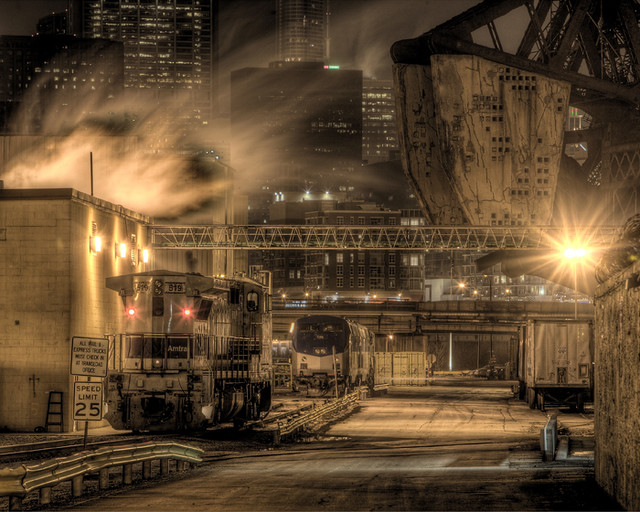
So, there's a lot that I like about this photo: the textures, the oppressive nature of the sodium vapor lights, the layers within the photo, the varied industrial subjects.
But most of all, I like it because, if you're a Chicagoan, you can immediately tell what season it was, and what the weather was like.
It was winter. It was windy. It was cold.
Tuesday, July 17, 2012
Scattershot: DC Noir
So, after the success of my Chinatown Express photo, I decided to have a go at turning that idea into a series. Here's some of what I came up with.
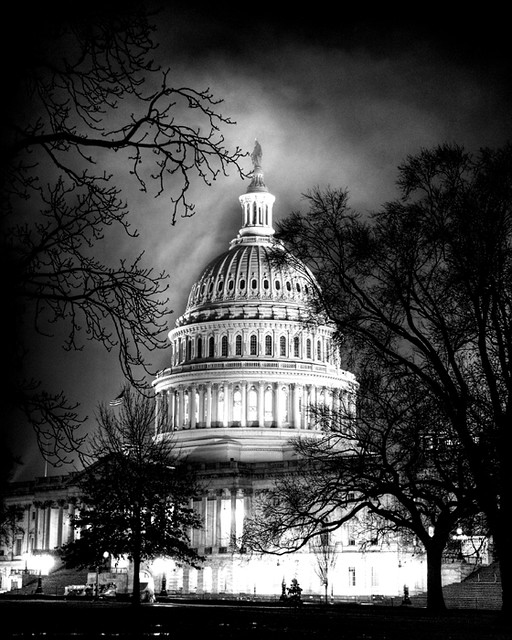
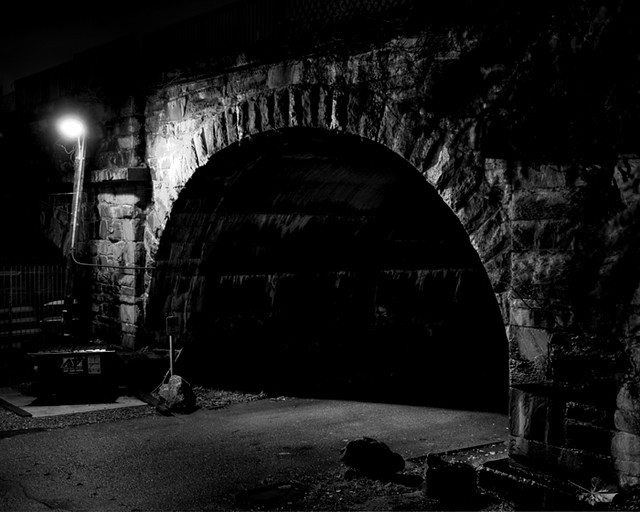
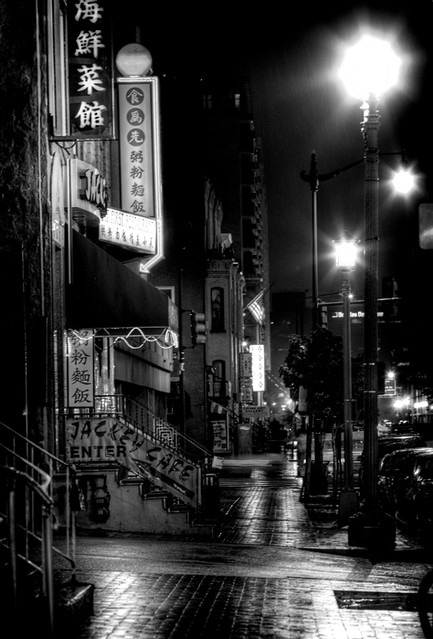
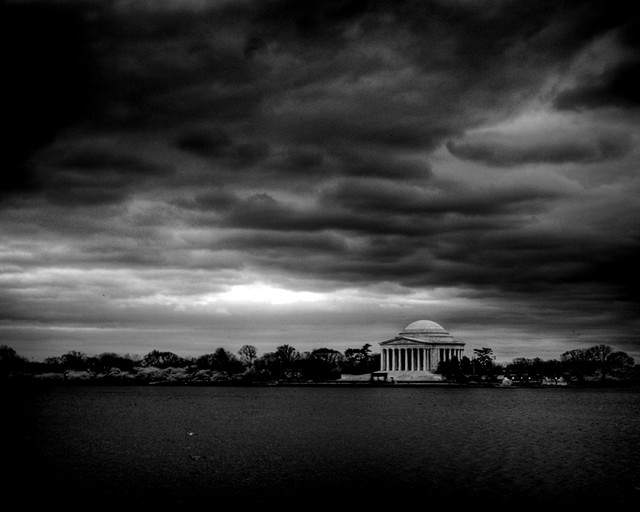




Saturday, July 14, 2012
Vive La France!
Yeah, yeah - I've done postings with these photos before. Sue me - they're appropriate for the day.
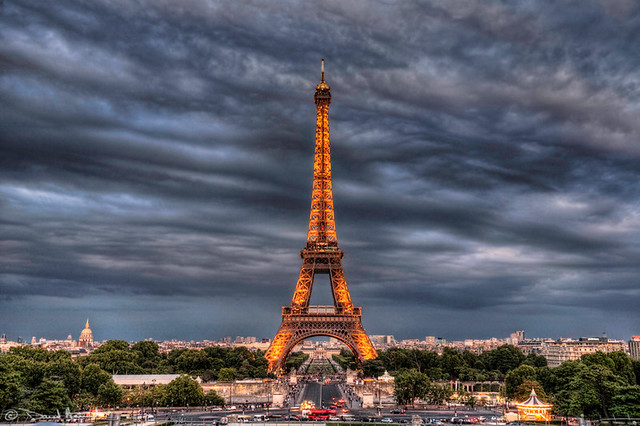
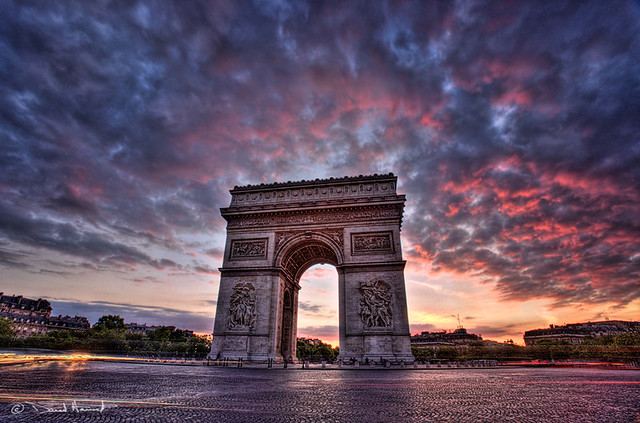
Anyway, Happy Birthday France. I should be back with some new stuff next week.


Anyway, Happy Birthday France. I should be back with some new stuff next week.
Subscribe to:
Posts (Atom)
